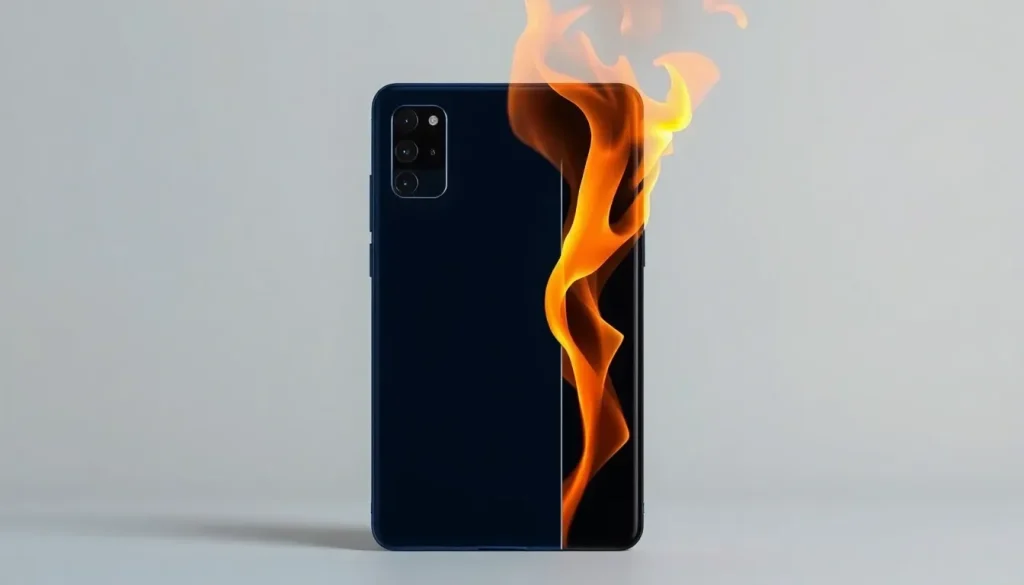Samsung Galaxy S25+ Catches Fire: What You Need to Know

In a concerning incident reminiscent of the notorious Galaxy Note 7 saga, a Samsung Galaxy S25+ recently caught fire in South Korea while the user attempted to charge the device. This event has raised alarms not only among Samsung enthusiasts but also within the broader smartphone community, reminding everyone of the potential risks associated with lithium-ion batteries.
The user, identified by the handle "Chew ee jan," shared their alarming experience on Samsung's Community Forum. While investigating charging issues, the Galaxy S25+ began to overheat, culminating in a sudden "puck" sound. Alarmed, the user dropped the device, which subsequently caught fire on the floor. This shocking revelation has sparked discussions about safety protocols and the responsibilities of manufacturers when it comes to battery technology.
What Happened with the Samsung Galaxy S25+
According to preliminary findings from Samsung's Service Center, the exact cause of the fire remains unknown. The details surrounding the incident are crucial for understanding whether this is an isolated case or indicative of a systemic issue. Several unanswered questions linger:
- Was the device being charged with an official Samsung charger?
- Where was the phone typically charged? Was it on a soft surface, such as a pillow, or near a heat source?
- Had the device's batteries been replaced prior to the incident?
Each of these factors could significantly influence Samsung's response and the implications for consumer safety. For example, using non-certified chargers can often lead to overheating and potential hazards, prompting discussions about the importance of adhering to manufacturer guidelines.
The Legacy of the Galaxy Note 7 Incident
This event inevitably draws comparisons to the Galaxy Note 7 fiasco, where faulty batteries led to overheating and fires, resulting in a substantial recall and severe damage to Samsung's reputation. The Note 7 incident involved:
- Battery defects that resulted in combustion.
- Widespread recalls and bans on flights.
- Significant financial losses for the company.
Such parallels may amplify consumer anxiety, leading to increased scrutiny of Samsung's manufacturing processes and quality control measures. It’s essential for the company to reassure customers that they have implemented stringent safety protocols to prevent a recurrence of past failures.
Consumer Safety and Manufacturer Responsibility
In light of this recent incident, the question of consumer safety looms large. Manufacturers like Samsung must prioritize safety in their designs and production processes. As smartphones become more advanced, the complexity of battery technology increases, necessitating rigorous testing and quality assurance. Key measures include:
- Thorough testing of battery cells to prevent defects.
- Clear guidelines for consumers on safe charging practices.
- Prompt communication and transparency regarding any identified issues.
By focusing on these areas, manufacturers can help mitigate risks and enhance consumer confidence in their products.
The Current Status of the Galaxy S25+
As of now, there is no evidence to suggest a systemic fault in the Galaxy S25+. However, the incident has sparked renewed interest in battery safety across the smartphone industry. Consumers are advised to remain vigilant and report any unusual behavior in their devices, such as overheating or swelling, to the manufacturer immediately. Additionally, users should follow best practices for smartphone usage, including:
- Using only official chargers and cables.
- Avoiding charging on soft surfaces.
- Keeping devices away from extreme temperatures.
These steps can help ensure that devices operate safely and reduce the risk of potential hazards.
Future Implications for Samsung
This incident may have wider implications for Samsung. The company is likely to increase its focus on battery safety and risk management in future product releases. Given the competitive nature of the smartphone market, maintaining consumer trust is paramount. Samsung may take the following actions:
- Enhancing quality control measures in battery production.
- Investing in research for safer battery technologies.
- Improving customer service protocols to handle safety-related complaints efficiently.
As the situation develops, it will be crucial for Samsung to communicate effectively with its users and the media. Continued transparency about findings and potential risks is essential in regaining consumer confidence.
For a deeper insight into the incident and its implications, you may find the following video informative:
As we await more information from Samsung regarding this incident, it serves as a stark reminder of the importance of battery safety in our increasingly tech-driven lives. Consumers are encouraged to stay informed and proactive in ensuring the safety of their devices.




Leave a Reply